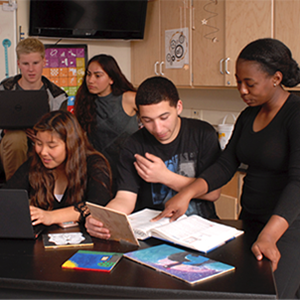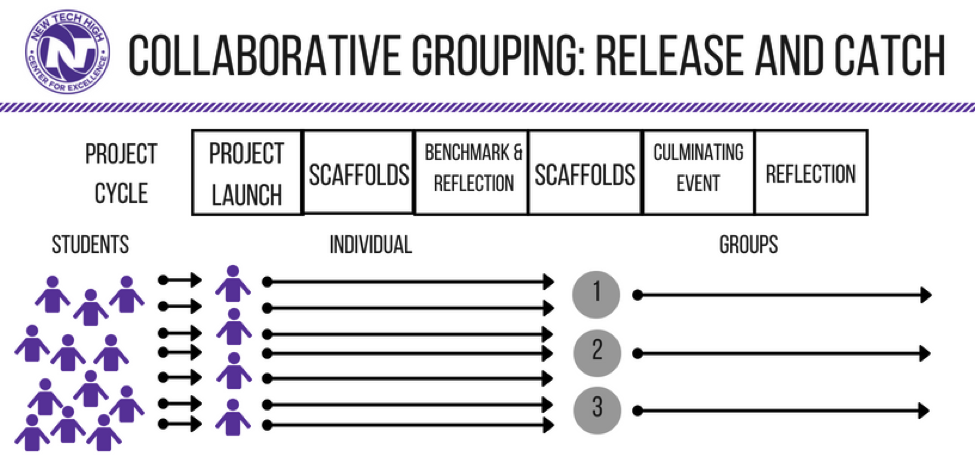
How long does it take to have kids who know the tools to make a PowerPoint? A Prezi? A Slideshow? It might be only 10 minutes. These kinds of activities and tasks lead to a world of divide and conquer, or one person doing all the work in the group. This is often a point of challenge when entering into Project Based Learning. We don’t want to model a culture of PBL that is just about putting kids in groups. Students gain collaborative skills by contributing to the learning and work of others and building upon each other’s ideas to co-create... not by just dividing and conquering tasks to complete the final product.
What we want from students in group work is to focus on the “3 I’s” – being interactive, innovative, and interdependent around content and learning outcomes. Let’s use a sports analogy. When I was a swimmer and water polo player we were required to be in groups and a team constantly. In swimming, we had a great relay team. However, each morning and evening in practice, we didn’t practice as a relay team. We focused on improvement on the individual level, in order to see progress on the team level. We worked together in each stroke to identify how we could contribute to the relay team as first leg through fourth leg of the relay. I want the work in my project groups to be interactive in the same way.
Collaboration in PBL doesn’t always have to mean students work in the same group of four during the entire project. Students can still learn valuable success skills such as collaboration outside of the group that eventually creates the final product in a project.
When the learning outcomes are clear in a project and rolled out to students in the project launch, the expectations are clear. Success in the project needs to be more than just what putting kids in a group produces. Separating the learning outcomes (core content knowledge and how each individual will demonstrate mastery) from the context of the project (real world authentic problem) provides clarity and reduces the “divide and conquer” mentality within a group. This also develops the interaction, innovation, and interdependence of the group members.
The “Release and Catch” approach to group work
My colleague Riley Johnson, Principal of New Technology High School in Napa, California writes in his blog “Collaboration vs. Group Work” about the push to move away from “group work to collaboration nirvana.” One of the graphics that we use to help prevent the divide and conquer problem in PBL and show how interaction, innovation, and interdependence works, is the “Release and Catch” method seen below.

In the “Release and Catch” method students demonstrate their learning of core content in the project individually. Then students can be grouped to apply their learning to an authentic context or problem. On the surface of this may look like a “dessert” type of project. However, students can still gain collaboration skills outside of a group of four during the early stages of the project. They can gain those skills in think-pair-share activities, jigsawed content learning, and giving and receiving peer feedback to build on the learning of others. In this way, throughout the project students are being interactive, innovative, and interdependent instead of dividing and conquering.
Why do you have students working in groups?
Before your next project, think about what is the “why” behind putting your learners in groups. Can they gain skills in collaboration in more ways besides being in the same group of four for the whole project? When and where might you scaffold the process for learners so they are more interactive, innovative and interdependent in the process of the project? It all starts with clarity about what we want students to learn in the project. Is the project just to get kids to work together? Is the project just to teach collaboration skills? That’s not why we do projects. We do projects to get learners to go deeper into content along with building success skills.
When we as teachers start to focus on questions like “Who is in a group?” “How do I group students?” and “What happens when a student doesn’t pull their weight?” etc., I would argue that these questions distract us from the core of what we really want in collaboration. This is often why groups don’t work well in PBL and why we spend so much time on management issues rather than how can we go deeper into core academic content and how to apply it authentically.

